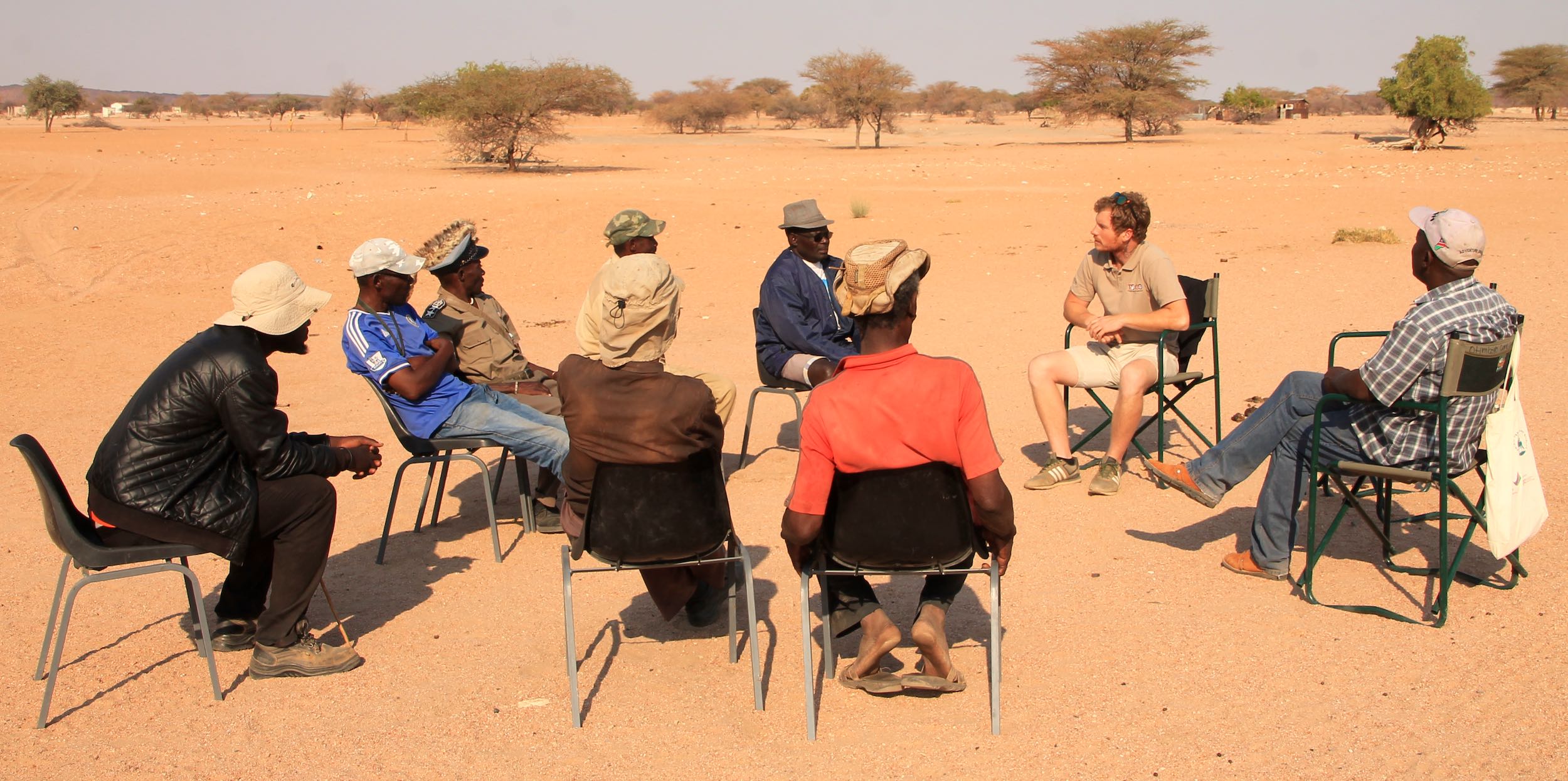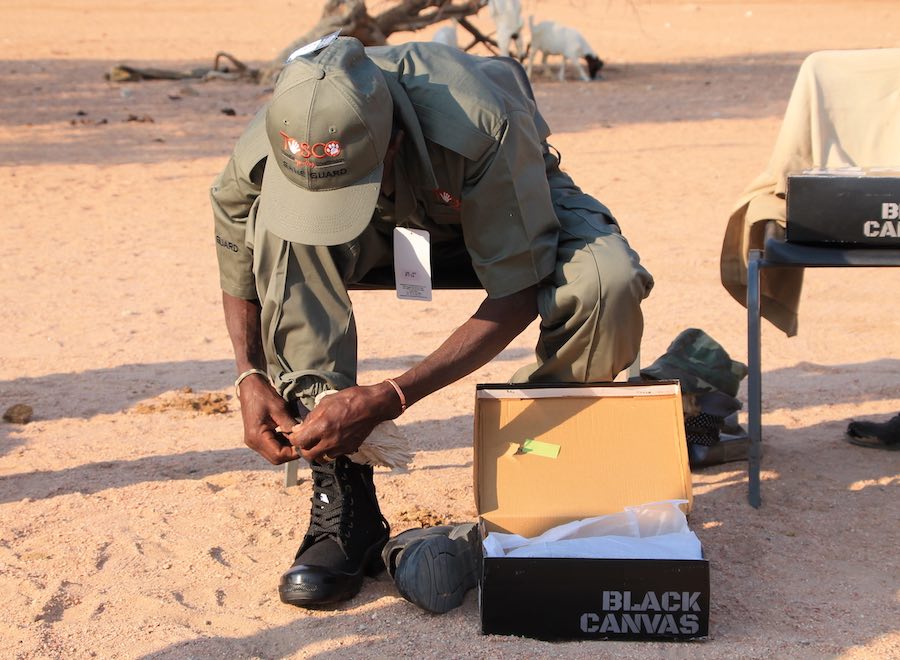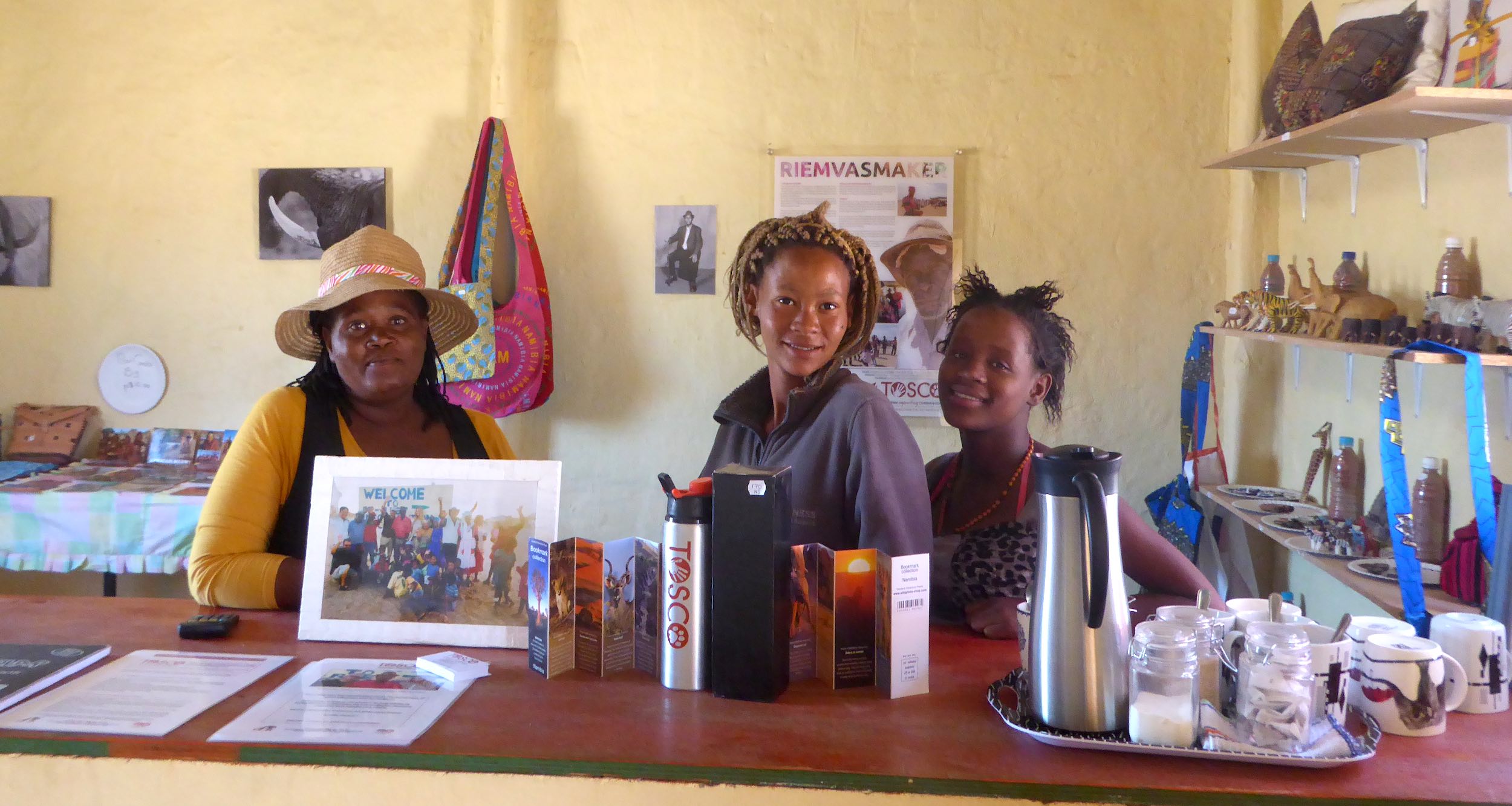
Leaving more than just dust
How tour operators are contributing to conservation in the Kunene Region
By Tourism Supporting Conservation (TOSCO)
8th August 2020
Many visitors to Namibia will be well satisfied with the landscapes and diverse wildlife they encounter in national parks like Etosha, Bwabwata, Mudumu or the Namib-Naukluft, among others. Yet some prefer to go off the beaten track and explore the vast north-western Kunene Region which hosts free-roaming rhinos, lions and elephants in dramatic desert landscapes. For many intrepid explorers this is Namibia at its best.
Unlike the national parks, the Kunene Region is not a fenced game reserve that excludes people, but an area where people manage to live with the wildlife that moves through their land. Because there is no fence, there is no entrance gate to the Kunene Region as a whole or to any of the smaller management areas, known as communal conservancies, within it. While visitors pay to enter national parks like Etosha at one of the gates, visitors to Kunene’s communal conservancies do not pay to enter. This provides a sense of freedom and wilderness that is an important attraction for people who like the road less travelled, yet it creates a challenge for financing conservation efforts in the region.
The people living in the Kunene Region bear costs associated with the wildlife that visitors come to see, particularly lions which cause livestock losses and elephants which damage critical water installations. They also play a vital role in protecting the important black rhino population in the region by informing the anti-poaching teams and the police of suspicious activities, which stops poachers in their tracks. If more visitors to the region understood these local efforts to coexist with and protect valuable desert-adapted animals, they would no doubt be happy to contribute to supporting these grassroots conservationists.
Some conservancies benefit from the visitors they attract by offering accommodation in partnership with private safari companies or setting up their own lodges and campsites. Not all of the visitors, however, stay in the conservancies where they see the most wildlife, as the unfenced conservancy boundaries are not obvious and tour groups may move through several conservancies in a short period of time. While the private companies which build lodges in conservancies pay for the use of the land and associated wildlife viewing opportunities, mobile tour operators who take their guests on extended camping trips do not have to pay for traversing the conservancies’ land. Furthermore, not all of the villages in each conservancy are equally affected by human-wildlife conflict; those that are closest to wildlife hotspots like the dry riverbeds usually suffer the most.


Tourism Supporting Conservation (TOSCO) wants to change this situation by bringing conservation-minded mobile safari operators together to contribute meaningfully to the people who conserve the wildlife their guests come to see. TOSCO is on a mission to ensure that visitors to these remote, spectacular places leave more than just their dust behind for those who call the Kunene Region home. We recognise that living with dangerous animals like lions and elephants is difficult, and many local farmers see them as a threat to their lives and livelihoods. Yet we also know that people come from far and wide to see these same animals. TOSCO’s vision is to connect international tourism with local livelihoods, thus creating a win-win situation for tour operators and people in the region.
We seek to achieve this lofty goal through our voluntary Conservation Contribution programme that collects money from mobile tour operators for use in sustainable development projects on the ground. The programme focuses on the wildlife-rich dry riverbeds that attract most of these operators who know that these locations provide the best opportunities for the elephant and lion sightings that their guests are most eager to experience. The TOSCO payment system, established in 2016, is simple and affordable: tour operators that sign up to the programme pay N$100 per day for every guest they bring into these wildlife areas, just as they would in a National Park. The money collected is then invested in various projects that support the people who are most severely affected by human-wildlife conflict. TOSCO keeps their members up to date on these projects to ensure complete transparency about how their funds are used.
The Huab River valley is a key wildlife hotspot that attracts hundreds of guests each year, especially because of its close proximity to Twyfelfontein, a UNESCO World Heritage site. Visitors who want to view the rock engravings at Twyfelfontein and get a chance to see desert-adapted elephants can join a guided tour into the Huab River valley. Those who use guides who support TOSCO’s Conservation Contribution programme will leave with more than just photographs and memories – they leave knowing that they have contributed to improving local livelihoods.

The TOSCO project in this area focuses on De Riet, a village on the bank of the Huab River that is visited by elephants almost daily. We used the Conservation Contribution funds to renovate a disused bungalow in the village to create an Information and Craft Centre for tourists. This is an opportunity for cross-cultural learning, as international guests can meet the Riemvasmaak people who experience elephants and other wildlife in a totally different way to safari-goers. Visitors can buy locally made crafts as a memento of their encounter with the people of De Riet and the elephants of the Huab River in the Torra Conservancy. TOSCO plans to renovate more bungalows in the near future as infrastructure for a community campsite that will provide much-needed jobs to people living in De Riet.
The Hoanib and Hoarusib rivers also attract wildlife and tourism that provides an opportunity for investing in conservation. These rivers are located within the Sesfontein and Puros conservancies respectively, which employ community game guards to monitor wildlife numbers and assist with human-wildlife conflict. TOSCO used the Conservation Contributions from tour operators visiting these riverbeds to sponsor equipment for the game guards to boost their morale and help them carry out their work in their respective conservancies.
The stunning landscapes and unique desert-adapted species in the Kunene Region are a major drawcard for tourism and an opportunity for growing the local economy. Our efforts are part of the bigger picture of communal conservation in Namibia, which is supported by numerous stakeholders working together for the benefit of wildlife and people in rural areas throughout the country. For our part, TOSCO recognises the role that mobile safari operators can play in creating more benefits from wildlife for local people – the ultimate custodians of this unique tourism destination.

For more information about
Tourism Supporting Conservation (TOSCO)
visit:
tosco.org
For more information about
Tourism Supporting Conservation (TOSCO)
visit:
tosco.org
For articles on similar topics, please click one of the following options:











